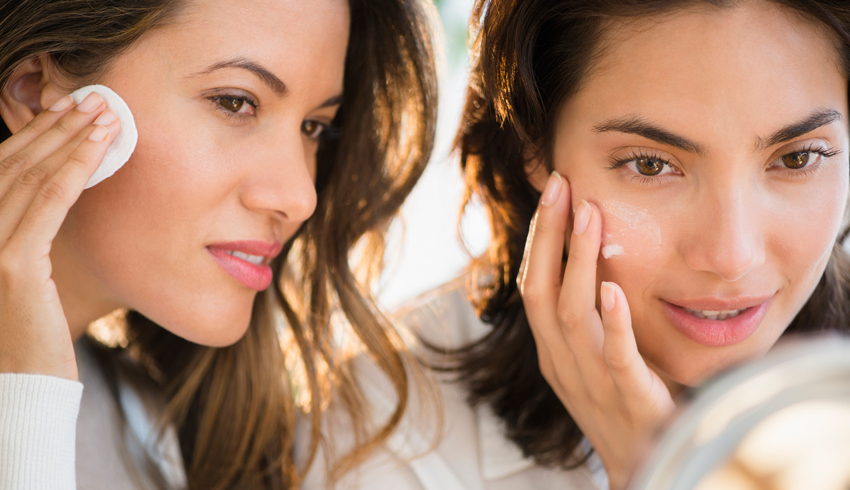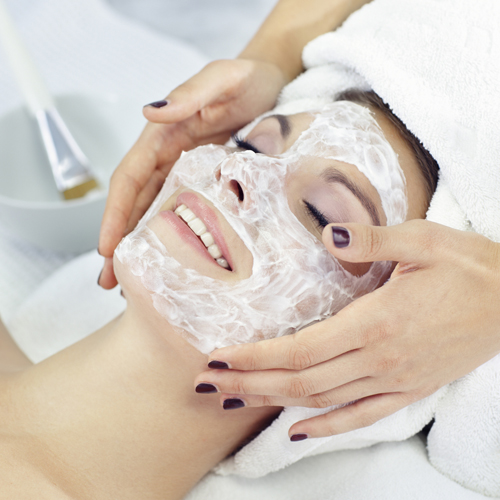
Are Chemical Peels Safe? Types of AHAs
Mention “face” and “peel” in the same sentence, and many of us conjure images of Samantha’s botched facial on Sex and the City. Luckily, not all facial peels yield such aggressive results — and alpha hydroxy acids (AHAs) contain some of the gentlest acids for your skin. We’re going to explore the types of chemical peels and the potential benefits of getting a professional facial peel next time you're at a spa.
What Are AHAs? Lactic Vs Glycolic Vs Mandelic Acid
AHAs are molecules derived from natural sources like sugar cane, milk, and grapes and they’re ideal for treating issues that lie on the skin’s surface. AHAs help break down the bonds that hold dead skin cells on the surface, allowing your younger skin to emerge from underneath with less resistance. As a result, they’re proven to be an improvement solution for more dry, mature and sun-damaged skin types because they encourage cell turnover and provide moisture.
According to Healthline, AHAs not only help with exfoliation but can:
- promote collagen and blood flow
- correct discoloration from scars and age spots
- improve appearance of fine lines and wrinkles
- prevent acne breakouts
- brighten the complexion for a glow
- increase product absorption
When you start looking at your ingredient list, there are three main types of AHAs to look for.When you start looking at your ingredient list, there are three main types of AHAs to look for. The key active ingredients in many facial peels include glycolic acid, lactic acid and mandelic acids.
Lactic acid gently exfoliates the skin and gives even the dullest complexion a megawatt glow. Lactic acid is the gentlest of the bunch. As Dr. Libby explains to Hellogiggles.com: "It is a larger molecule than the well-known glycolic acid, also an AHA, so it does not penetrate skin layers as deeply — which gives it a more shallow and uniform skin penetration, making it more gentle and ideal for more sensitive skin types."
Derived from sugar cane, glycolic acid dissolves dead skin cells, clearing up blocked pores and blackheads. It’s a very effective breakout treatment since it eliminates deep blockages of dead skin cells and sebum build up, which improves the complexion as well as texture on the face.
Mandelic acid targets wrinkles and fine lines, hyperpigmentation and discoloration. It helps accelerate cell turnover by dissolving the tiny bonds that hold skin cells together. Mandelic acid is used in our Bright Skin Licorice Root Exfoliating Peel to gently exfoliate and improve the look of fine lines and red, dry skin.
One Eminence Organics customer, Lauri B, left this website review about our facial peels: “I was introduced to the Bright Skin Exfoliating Peel pads a few months ago by my esthetician and have found them to be an amazing addition to my skin care regimen. I use them two to three times a week and after the first few applications, I found my skin tone to be more even, radiant and brighter. I also noticed that my pores appear smaller and my skin looked more refined. Highly recommend it if you are looking to give your brightening routine an added boost.”
If you visit an Eminence Organics Spa Partner for a facial, you may experience the Arctic Berry Pro Advanced Peel Activator MA20, a professional treatment designed to gently exfoliate and rejuvenate the skin. This potent formula contains natural acids, including lactic acid (commonly found in hibiscus extract), which helps dissolve dead skin cells, promote skin renewal and enhance your complexion’s radiance. Exclusive to spa treatments, this advanced peel is expertly applied by estheticians to deliver refined texture, improved clarity and a luminous glow.

The 5 Benefits Of A Professional Chemical Peel
When applied by a licensed esthetician, professional chemical peels like Eminence Organics Mangosteen Lactic Pro Peel 10% are perfectly safe and give amplified results. Here are the five benefits of getting a professional lactic acid peel at your favorite Eminence Spa Partner.
1. More Active Ingredients
While at-home peels contain 1-5% active ingredients, professional peels generally contain anywhere from 10%-20%. What does this mean for your skin? An even greater concentration of the results-driven ingredients found in your favorite at-home skin care products. This doesn’t mean that it’s time to say goodbye to your home care routine; using an at-home peel twice a week is an excellent way to extend and enhance the benefits of a professional peel.
2. Faster Skin Cell Turnover
Professional lactic acid peels deliver a high percentage of active ingredients to kickstart your skin’s renewal process. Lactic acid gently breaks down the glue that holds dead skin cells together and dissolves superficial surface buildup. Dermatologist Dr. David Bank tells Allure: “As that topmost layer is shed, signals are sent to the living cells below to multiply and move up, to increase collagen production, to make more hyaluronic acid — to act younger."
3. Better Product Absorption
Shedding old cells on the surface and revealing new ones are an important benefit for the rest of your skin care routine: Your skin becomes more absorbent and receptive to the skin care products that follow. With no dead skin cells blocking their way, the active ingredients in the rest of your routine can penetrate more deeply. The result: an even better performance by your favorite Eminence Organics products.
4. Immediate Visible Results
Due to their potency, professional peels are designed to deliver maximum benefits in a short amount of time. This means you can expect your skin to look softer, smoother and more radiant after your first spa visit. Reader’s Digest recommends getting a series of mild chemical peels every few weeks to keep your skin looking its best.
5. Minimal Downtime
Unlike more extreme chemical peels, professional lactic acid peels require little to no downtime. And they’re absolutely safe when used according to protocol by an Eminence Organics-trained esthetician. Our Mangosteen Lactic Pro Peel 10% provides a complete surface and pore-refining treatment by removing impurities and dead skin cells while minimizing pores and smoothing the look of the skin. This revitalizing peel is self-neutralizing and non-irritating, meaning you can confidently go straight from the spa to a special occasion (like Carrie Bradshaw's book launch). So, you can put your “Sex and the City” fears to rest.
Caring for skin after a chemical peel is crucial for recovery so that your skin can heal and look its best. In this In The Mix video, Lead Skin Care Trainer Natalie Pergar shares chemical peel aftercare tips for best results.
Have you had a chemical peel before? We’d love to hear about your spa or at-home experience. Share it with us in the comments below and join the conversation on social media.
This article was originally written in April 2018.